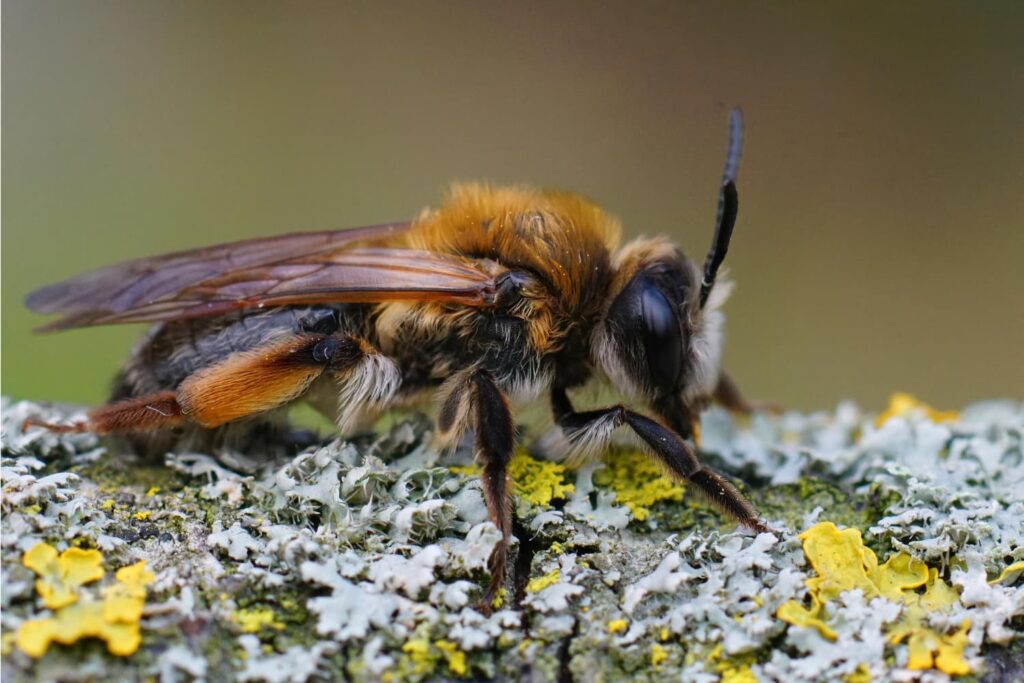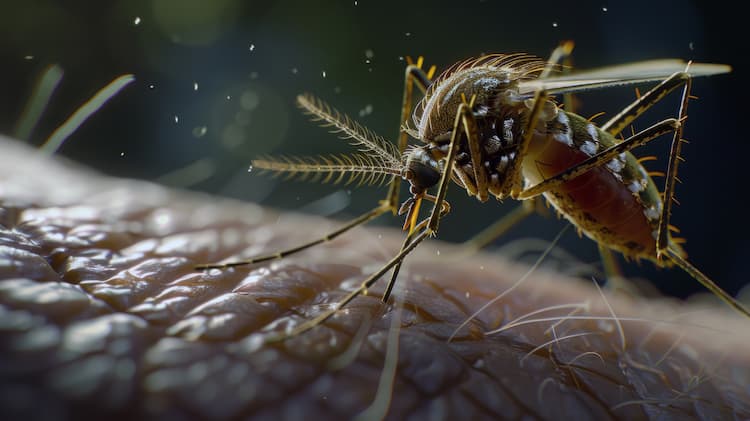Annually, over 500,000 people visit the emergency room due to stinging insects such as yellow jackets, hornets, wasps, and bees. Due to their aggressive nature, these pests frequently sting to defend their colonies or larvae from individuals trying to remove the infestation on their own.
It’s critical to identify the type of stinging insect you might be facing. For instance, neither we nor you want to handle or harm honeybees in any way. However, yellow jackets and hornets can be very aggressive and unpleasant in outdoor spaces. People with allergies may be present, so you should know what kind of wasp or bee is stinging them. Before that occurs, it is preferable to hire a professional to simply get rid of the stinging pests.
If you believe you need bee removal, wasp removal, yellow jacket removal and hornet removal services for your home do not hesitate to contact Optimum Pest Control.
How to Distinguish between Wasps, Hornets, Yellow Jackets, and Bees?
Before taking action against these pests, it’s imperative to identify precisely what kind of stinging insect they are. Because they appear similar, it’s easy to confuse them; however, they each have distinct characteristics to look for; all you need to know is what they are.
Ways to Identify Bees
Bees are flying insects that are black and yellow. Generally, they’re friendly creatures that are searching for pollen and nectar to bring back to their hive.
Bees are essential to all ecosystems because they’re pollinators, which means they make sure plants can complete their reproductive cycle. These bugs can sting, but they will only use their stinger to defend the hive. This is because bees are forced to make the ultimate sacrifice. After all, their barbed stingers are torn from them after use.
Compared to other stinging bugs, they’re typically shorter, fatter, and have a hairy appearance.
In New York, there are thought to be over 400 different species of bees. Digger bees, or solitary, ground-nesting bees, make up the majority of bees in New York State (54%). While ground-nesting bees predominate in New York state, some species also build their nests in cavities that already exist, such as twigs, hollow stems, beetle burrows, or locations above ground. Mason bees, wool carder bees, and other types of resin bees are examples of these aboveground cavity nesters.
The carpenter bees are yet another significant bee species. Carpenter bees come in two sizes in North America: small and large. These bees build their nests in wood or old cavities.
The following are some of the most common species in New York:
- Common Eastern Bumble Bee: In all of New York, it’s the most widespread species. These bees, which can be recognized by their hairy bodies that are yellow and black, are among the most significant pollinators in the area.
- Western Honey Bee: One of the most significant honey-producing species worldwide is the Western Honey Bee. Most of it can be found in New York, where beekeepers look after their colonies.
- Carpenter Bee: Wood is the only place where these bees build their nest. They have a larger appearance than bumblebees. The males can be seen hovering around the perfectly drilled holes, shielding the females and larvae. While only females will sting, they can all be quite intimidating. They can seriously harm decks, playgrounds, garages, soffits, and other wood framing around the house. The damage will only worsen yearly if they’re not stopped.
 Ways to Identify Wasps, Hornets, and Yellow Jackets
Ways to Identify Wasps, Hornets, and Yellow Jackets
Wasps are a general term for two different species of flying insects: solitary and social. Social wasps have a single queen and live in large colonies, like paper wasps, hornets, and yellow jackets.
The reason solitary wasps, such as mud daubers and digging wasps, are called such is that each egg-laying queen constructs and lives in her own nest. Even when their nests are disturbed, lone wasps aren’t hostile and won’t often attack and bite.
Wasps and bees can generally be identified by their longer, thinner bodies and absence of body hair. Their bodies are segmented, and they have two sets of wings in addition to six legs.
The world is home to about 5,000 distinct species of wasps. While some wasp species consume and kill other pest insects, others are useful pollinators. Although some people find wasp, hornet, or yellow jacket stings to be extremely painful and even dangerous, these insects play an important role in the ecosystem. However, even with these advantages, they must be managed when there’s a high risk of human contact.
Some of the most common types of wasps that homeowners deal with include:
- Yellow Jackets: One common kind of wasp is the yellow jacket. Extremely hostile, these wasps will make their nests under the ground, in hollow trees, attics, wall voids, and behind siding, among other locations. They’re very aggressive and will sting repeatedly if provoked. In addition to being uncomfortable, stings can be fatal for those who are allergic.
- Paper Wasps: The nest built by these wasps resembles an upside-down umbrella. They typically build their nests in outdoor light fixtures, gutters, or under ledges. They also typically do so in shady, rain-protected areas.
- Secada Killers: These wasps have subterranean nests. Large mounds of dug-up dirt on lawns are indicators of nesting. As suggested by their name, they hunt cicadas and feed them to their young.
- Digger Wasps: They burrow their nests in the ground, much like cicada killers, but they create smaller mounds with precisely drilled holes. They also pursue prey to provide food for their young.
- Mud Daubers: The only creatures that truly view mud daubers as dangerous are spiders. Wasps known as mud daubers are solitary and in no way hostile to people. Rather than posing a threat to humans or animals, mud daubers are regarded as a bothersome pest.
- Hornets: Among the largest species of wasps are hornets. Additionally, they serve as pollinators and offer helpful pest control by warding off harmful insects. Being the most aggressive species of wasp, they can swarm anything that approaches their nest too closely. The European hornet is one of the most prevalent types of hornet.
- Bald Faced Hornets: Since it usually builds its nest outdoors, usually hanging from a tree limb or under a soffit, this species -which is actually a wasp- is given the name “hornet.” Generally speaking, the nest’s dimensions fall between those of a softball and a basketball. These wasps are extremely aggressive, much like yellow jackets, and will sting you even if you approach a nest too closely. Never try to heal them by yourself.
The main distinction between wasps, hornets, and bees is that the former two are carnivores that consume other insects, while the latter are vegetarians that gather pollen to nourish their young. Their primary similarity is that only females are capable of stinging.
 What are the Signs of a Bee Infestation?
What are the Signs of a Bee Infestation?
A bee infestation may be indicated by active bee nests, bee swarms, bees inside your home, dark patches on your walls or ceiling, and wood openings. Buzzing noises coming from within your walls also may be a sign that a bee colony or infestation is there. In such cases, you must act promptly to stop additional property damage.
What are the Signs of a Wasp/Hornet Infestation?
It is crucial to act quickly to protect yourself and everyone in your home if you think you may have a wasp or hornet infestation. Here are some indicators of wasps and hornets to be aware of:
- Observing a large number of hornets or wasps flying close to your home.
- Locating visible nests, like those in bushes, trees, or under roof eaves.
- Sensing the presence of a buzzing sound in a specific location.
- Seeing hornet or wasp remains on the ground.
- Observing round holes or burrows in the ground or wood.
It’s critical to keep an eye out for any indications on your property of wasp or hornet infestations. You can control these pests’ presence by taking the appropriate action as soon as you identify them.
It is always the right course of action to seek assistance from a professional pest control company that can offer bee removal, wasp removal, yellow jacket removal, or hornet removal services.
How do Bees, Wasps, and Hornets Defend Themselves?
Reducing the likelihood of an undesirable encounter with a swarm of stinging pests can be accomplished by being aware of the ways and reasons that bees and wasps defend themselves.
In general, honeybees are quite docile and won’t bother you unless they sense that their queen is in danger. Their stingers are barbless and will cling to their victim to keep injecting venom. The bee does die as a result of having its stinger torn out of it. Additionally, this activity might release pheromones that bees interpret as a threat signal, making them more agitated and hostile.
Most wasps, however, can bite and sting repeatedly. The wasp’s stinger is smooth, unlike bees’, and it can be used repeatedly without harming it. Nevertheless, they usually only launch an attack in response to a threat.
Finally, among the stinging insects, hornets are typically the most hostile. They may attack without being provoked, and they can sting multiple times without harming themselves.
What Distinguishes Wasp and Bee Nests from One Another?
Even though wasps and bees have quite different nesting habits, most people mistakenly believe that they’re very similar in appearance and behavior.
To store the honey they make, bees typically build their nests in hives made of wax. Depending on the kind, bees will line any area they deem to be home with their waxy secretion and build their nests in walls, trees, or beneath surfaces.
The way wasps build their nests mainly depends on whether they’re solitary or social. Solitary wasps only require a small area to locate a secluded spot in which to raise their young. Whereas a social wasp’s nest site varies greatly depending on the species. They’re migratory, spring-emergence colonies that spend the entire year building their nests.
To distinguish wasp nests from bee nests, note the following differences:
- Unlike bees, wasps do not form a swarm around their nest.
- Wasp nests are typically spherical in shape and have a grayish appearance.
- Bees, on the other hand, are social insects that reside in colonies in trees or underground. Beehives are typically found in obscure locations and have a more yellowish hue.
What Draws Hornets and Wasps to Your Home?
There are a few things in or near your home that could draw wasps or hornets. These include foods high in protein, such as meat and fish, sweet-smelling items, such as flowers, fruit, and nectar, and sugary drinks and snacks.
Additionally, they’re drawn to places that offer cover, like bushes, trees, and man-made buildings like attics or sheds. They might use any cracks or openings in the outside of your house as points of entry. If you want to avoid having a wasp or hornet infestation in your home, you should always seal any cracks or openings and keep it tidy and debris-free.
Are Wasps and Hornets Dangerous Insects?
The short answer is yes. On the other hand, wasps are highly significant because they have an ecological role in pest control. As predators, social wasps gather insects like grubs, grasshoppers, aphids, caterpillars, and flies, paralyzing them with their stings before storing them in egg chambers where the newly hatched larvae consume them.
Wasps are also beneficial to gardeners because they feed on some undesirable bugs. Adults are minor pollinators because they consume nectar and inadvertently pollinate some plants at the same time.
However, they can be an annoyance when dining outside because they’re drawn to meat and sweets and will scavenge whatever they find. They will also tend to gather near trash cans.
You run the risk of getting stung if you approach them or act aggressively, so try to be cautious.
 What to Do in the Event of a Wasp Sting?
What to Do in the Event of a Wasp Sting?
- To start with, get to a safe place to avoid getting stung again.
- Keep an eye out for any indications of an allergic reaction in yourself.
- Make immediate contact with a physician if you have a history of allergic reactions, exhibit signs of severe swelling, or have trouble breathing.
- Examine the sting closely and extract the stinger if it is there.
- Applying a cold pack to the sting area can help reduce swelling and soothe it if you’re not in any pain.
- One option is to use an over-the-counter insect bite and sting product.
- One of the home remedies is to apply a paste made with water and baking soda or a meat tenderizer.
- To ease the sting’s itching, an antihistamine may also be administered.
How to Handle a Bee, Wasp, Hornet & Yellow Jacket Removal in Long Island, NY?
To protect your home and yourself, you must act quickly if you believe you have a stinging pest infestation. Here are some precautions to take:
- Avoid proximity: When wasps or hornets are flying around your property in large numbers, keep your distance. They may become hostile if you disturb them.
- Put on protective gear: If you must be near wasps or hornets, put on gloves, long sleeves and pants, and closed-toe shoes as protection.
- Contact a pest control expert: Removing the nest yourself puts you at risk because hornets and wasps become hostile when they sense danger. For a secure and efficient removal, get in touch with a reputable pest control company that offers bee, wasp, hornet & yellow jacket removal services.
Your Local Pest Control Experts – Optimum Pest Control
Based in Wantagh, NY, we, as Optimum Pest Control, have been providing services to the Long Island region for over 20 years.
We use cutting-edge techniques while remaining mindful of the need to protect the environment. We have built our business on word-of-mouth recommendations from satisfied customers and providing exceptional customer service, so please feel free to check out the testimonials we’ve received.
Do not hesitate to give us a call right now if you believe you have an infestation and need help. We’re open Monday through Friday from 8 AM to 8 PM (8 AM to 4 PM on Saturdays).
